There’s a shift happening in B2B marketing – and it’s not about budget size, software stacks, or even new channels.
It’s about mindset.
In an age where every brand is “doing ABM,” the difference between average and exceptional lies in intentionality: are you just running campaigns that could reach your target accounts? Or are you proactively and strategically engaging the right accounts where they are?
LinkedIn offers a unique advantage here: with access to job titles, firmographic data, engagement signals, and a business-first environment, it’s a goldmine for modern ABM teams. But while marketers have used LinkedIn mostly for wide-net awareness (1:many) or for targeting clusters of similar accounts (1:few), the challenge with 1:1 personalization at scale has been operational: too time-consuming, too manual, and difficult to connect across systems.
Generative AI and LinkedIn-integrated platforms, like Userled, are transforming how B2B teams can build and deliver 1:1 campaigns on LinkedIn – not just for a few accounts, but for dozens or hundreds at a time.
This guide will show you how to structure your ABM program on LinkedIn across all three tiers, backed by the right architecture, tools, and best practices to scale intentionally.
The case for intentional ABM (and why LinkedIn is built for it)
The best ABM programs don’t wait. They don’t rely on forms to be filled, or hope the right stakeholders land on their website and instantly find the perfect solution.
Instead, they start by clearly defining who they want to influence, then architect personalized, multi-stage journeys designed to meet those accounts where they are – and often before they even raise their hand.
LinkedIn offers the perfect canvas for this kind of work. With advanced targeting, varied content formats, native lead generation tools, and a business-focused user base, it’s not just another channel in your mix – it can be the foundation of a high-performing ABM engine.
The three tiers of LinkedIn ABM
There are three tiers to ABM campaigns: 1:many, 1:few, and 1:1.
Each tier has its own tactics, measurement strategies, and purpose. Here, we’ll break down how you can structure and activate each to help build momentum – using insights from earlier stages to drive the next phase of engagement.
Tier one: 1:many – awareness and initial engagement
This is your broadest play – but it should still be strategic. Instead of blasting every job title in your ICP, smart 1:Many campaigns use segmentation, relevant creative, and lightweight content formats to start the conversation.
Define your audience using the right criteria
Once you’ve set your campaign objective and name, the first critical step is defining your audience. It’s easy to go too broad or too narrow when segmenting.
The ideal segmentation depends on the campaign’s nature and goals, but there are a few best practices to follow (along with LinkedIn’s default “landmines” to avoid, which you can find later in this article):
- Location: If you’re targeting accounts in NAMER vs. EMEA, it’s more efficient to split campaigns. Otherwise, you risk wasting budget due to timezone differences and uneven delivery.
- Job titles: For 1:many campaigns, it’s often better to target by title rather than function. The challenge lies in understanding LinkedIn’s naming conventions. You have two options: start with the right function (for example, marketing), exclude irrelevant job titles, and then move to title-based inclusion using what you’ve learned; or begin with known relevant titles (for example, senior director marketing) and add an exclusion layer (for example, product marketing).
- Years of experience or seniority: Depending on whether your approach is bottom-up or top-down, you may want to reach stakeholders and decision-makers based on seniority or experience.
- Company size: Avoid spending budget on companies that fall outside your ICP, whether they’re too small or too large.
- Exclusion criteria: Consider excluding non-relevant titles, competitors, customers, or company sizes that don’t fit your ICP.
Once your segmentation is set, save the audience so you can reuse it later. Double-check that the forecasted audience size and segment breakdown make sense before moving forward.
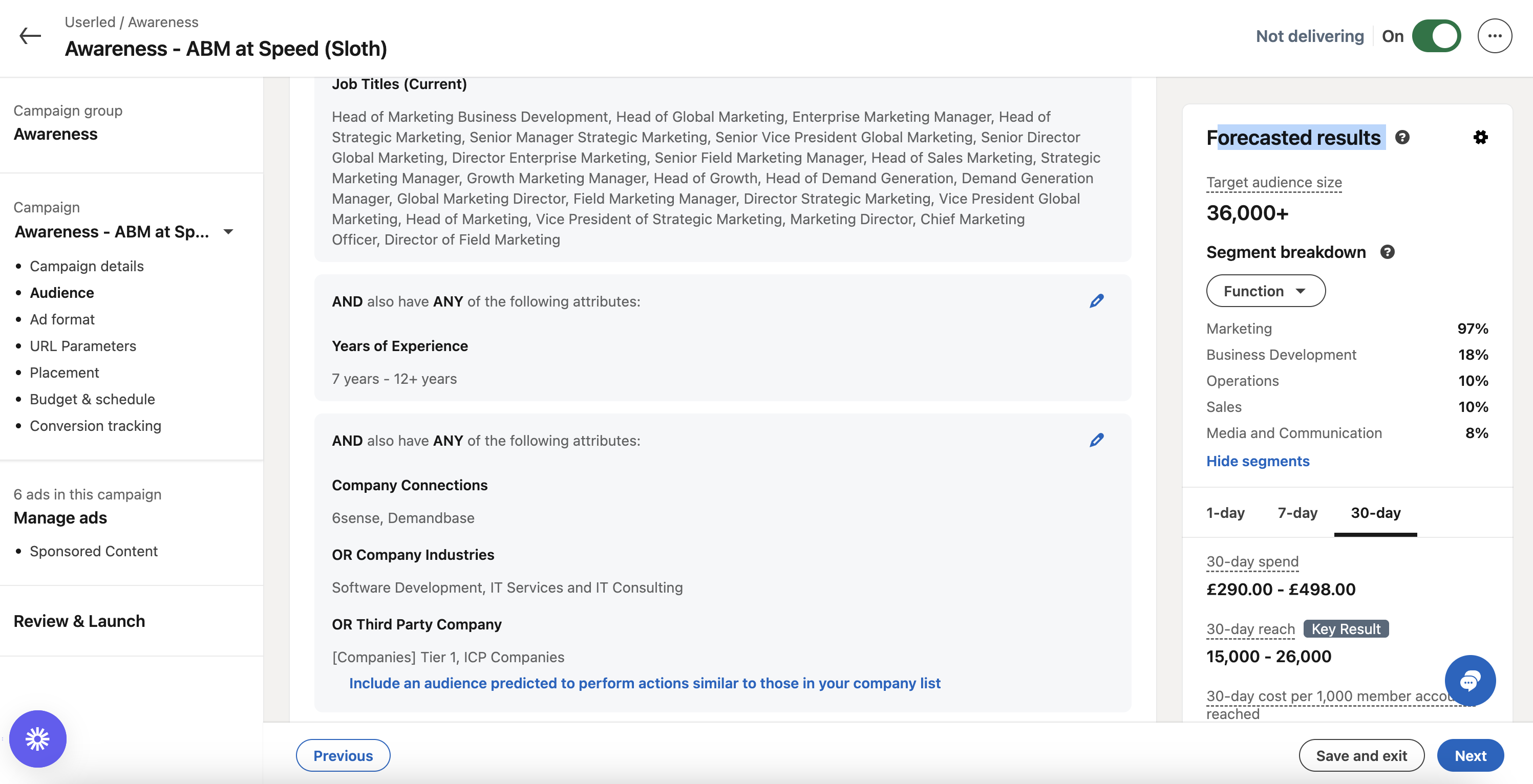
Pick ad formats that drive results
Video ads and lead gen form ads are some of the most effective formats here. They're in-platform, cost-efficient, quick to consume, and easy to deploy at scale. Short videos featuring customer clips, executive POVs, or educational snippets can spark initial interest. Reports, guides, and short-form content can be used to establish authority and encourage conversions through native LinkedIn forms.
LinkedIn’s platform has evolved to make this easier than ever. Features like Document Ads and Ad Personalization allow you to tailor messages at a deeper level – even within broad campaigns.
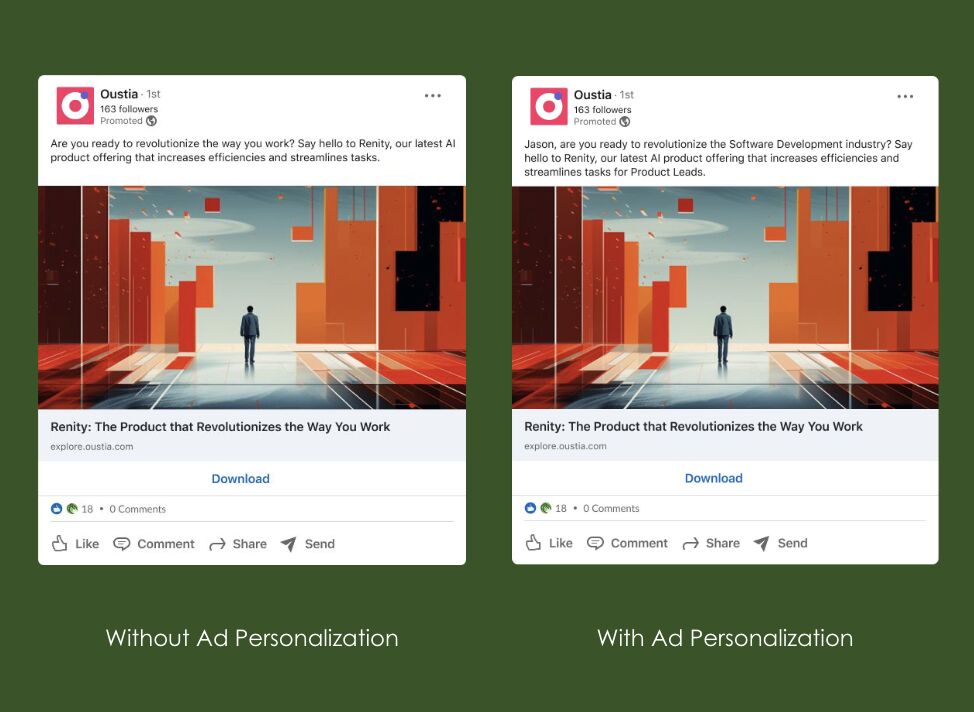
Create ad creatives that stop the scroll
You have defined your audience using the right criteria, selected the best performing ad format for your campaign objective, now comes the "fun" part: ad creatives.
Don't take the easy way out, there are multiple ways to stand out and capture your audience attention.
Lead with data or proof points
Show real numbers that validate your impact. Metrics like revenue influenced, pipeline generated, or customer growth immediately build trust and make your message feel tangible.

Use relatable visuals
Think about UI that people experiences daily. Familiarity draws attention faster than overly polished or generic stock imagery.
.png)
Use visual metaphors to spark curiosity
Creative analogies make abstract concepts easier to grasp and more memorable. A strong metaphor can turn a simple message into something scroll-stopping.
.png)

Connect LinkedIn with your CRM
It’s crucial to integrate your targeting with CRM data. Using matched audiences synced from your CRM ensures that you’re not just targeting people, but also engaging specific accounts with meaningful context.
At this stage, you can start using tools like Fibbler to track engagement from targeted accounts, including impressions, clicks, and other interactions. Userled platform does it too, on top of website, and microsites engagement.
Combine these insights with in-platform and CRM activity, such as watching a video, clicking an ad, or submitting a form. Once an account reaches a defined engagement threshold, it should be routed into CRM workflows and advanced to Tier 2.
Tier two: 1:few – segment-based, mid-funnel engagement
In Tier 2, you're speaking to smaller clusters of accounts grouped by common traits: industry, solution fit, geography, or funnel stage.
Here, personalization becomes sharper. You can apply industry-specific messaging, showcase relevant case studies, or use formats like Message Ads or Conversation Ads to start direct conversations.
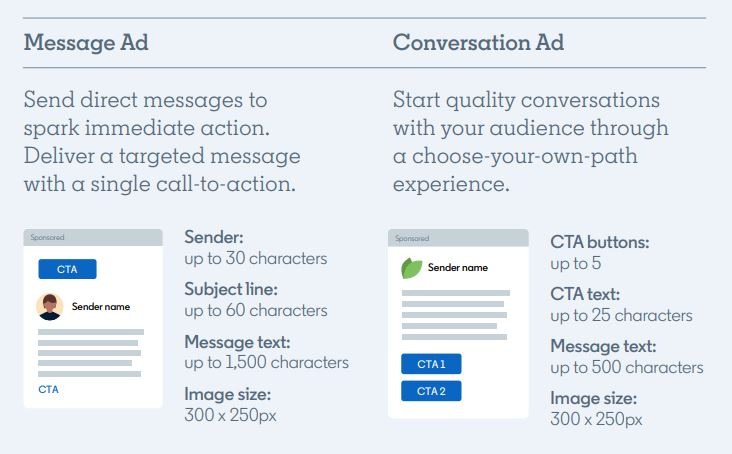
Show product visuals that help people picture themselves
Use product shots or short clips that show how your solution fits into their workflow. When people can visualize themselves using it, engagement rises.
.png)
Show the transformation, not just the product
Highlight the outcome your audience can achieve. Before-and-after visuals or quick comparisons help them see the change your solution creates.
.png)
Offer an incentive to turn interest into demo
Turn attention into engagement by offering something of value – a benchmark report, a calculator, or early access to insights that help them act right away.
.png)
One powerful tactic is to use previous engagement to define your segments. For example, accounts that watched 75% of a video or downloaded a report in Tier 1 can be retargeted with personalized mid-funnel content – such as testimonials from similar companies or product walkthroughs. These are the kinds of audiences LinkedIn enables you to create and retarget to ensure a cohesive and personalized journey.
Tier three: 1:1 – personalization at scale
The holy grail of ABM: one-to-one engagement that feels handcrafted, but scales like a machine.
In the past, 1:1 campaigns were limited to a few strategic accounts due to the sheer time and effort required. But with modern platforms like Userled, that’s changed.
You can now build personalized ads and landing pages for each account – dynamically inserting names, logos, pain points, industry data, or use cases – and then distribute these experiences at scale through LinkedIn campaigns.
This means you can run true 1:1 journeys for 50, 100, or even 200+ accounts, all without burning your team out, or adding extra headcount.
These campaigns generate more and deeper engagement, and with tools like Userled, you can also trigger real-time alerts in CRM or Slack, notifying account owners when high-value actions occur (such as viewing a landing page or engaging with a personalized offer).
.png)
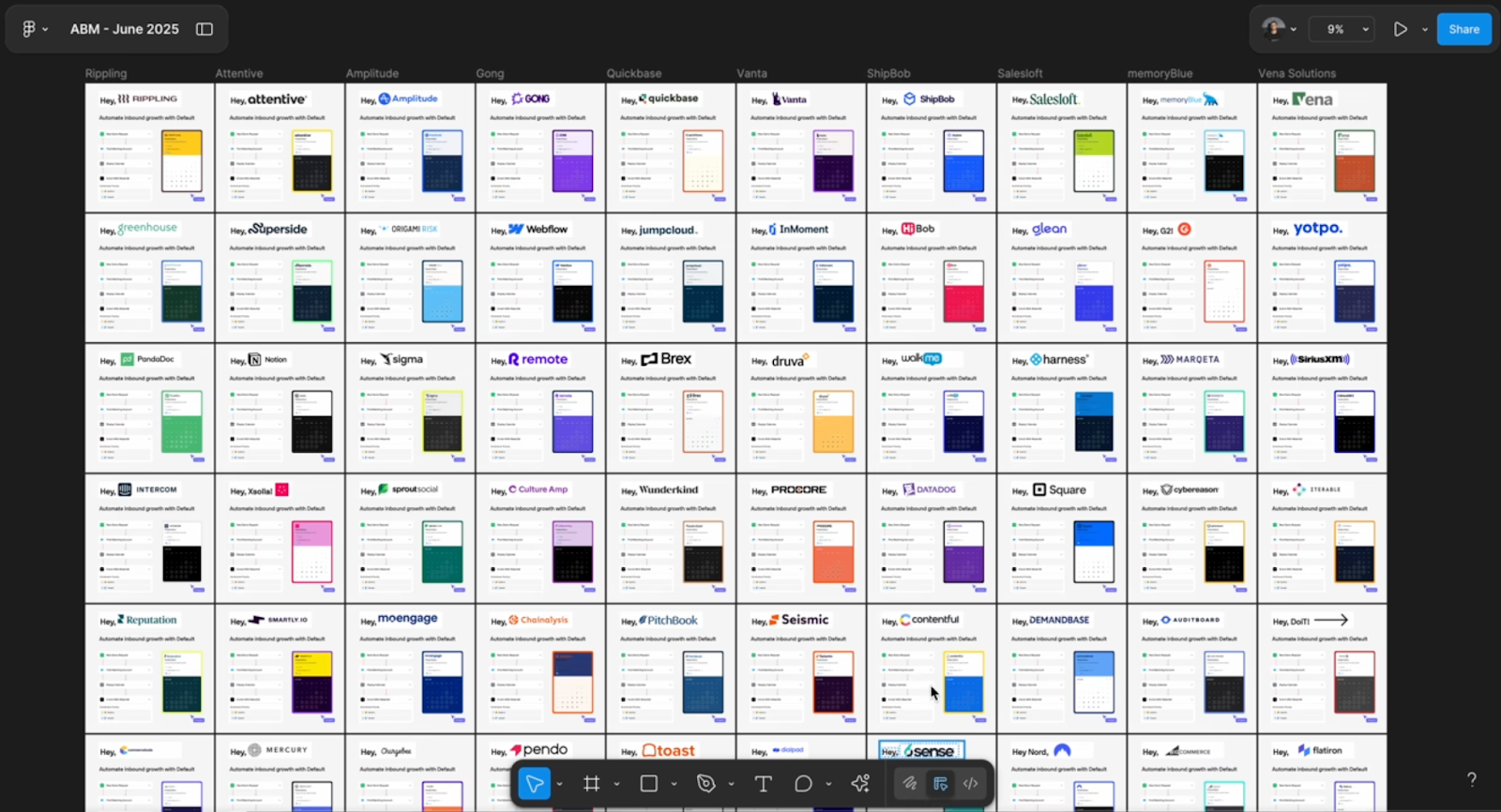
Structuring the backbone: syncing your target accounts
No matter the tier, every campaign should be built on the same foundation: your target account list.
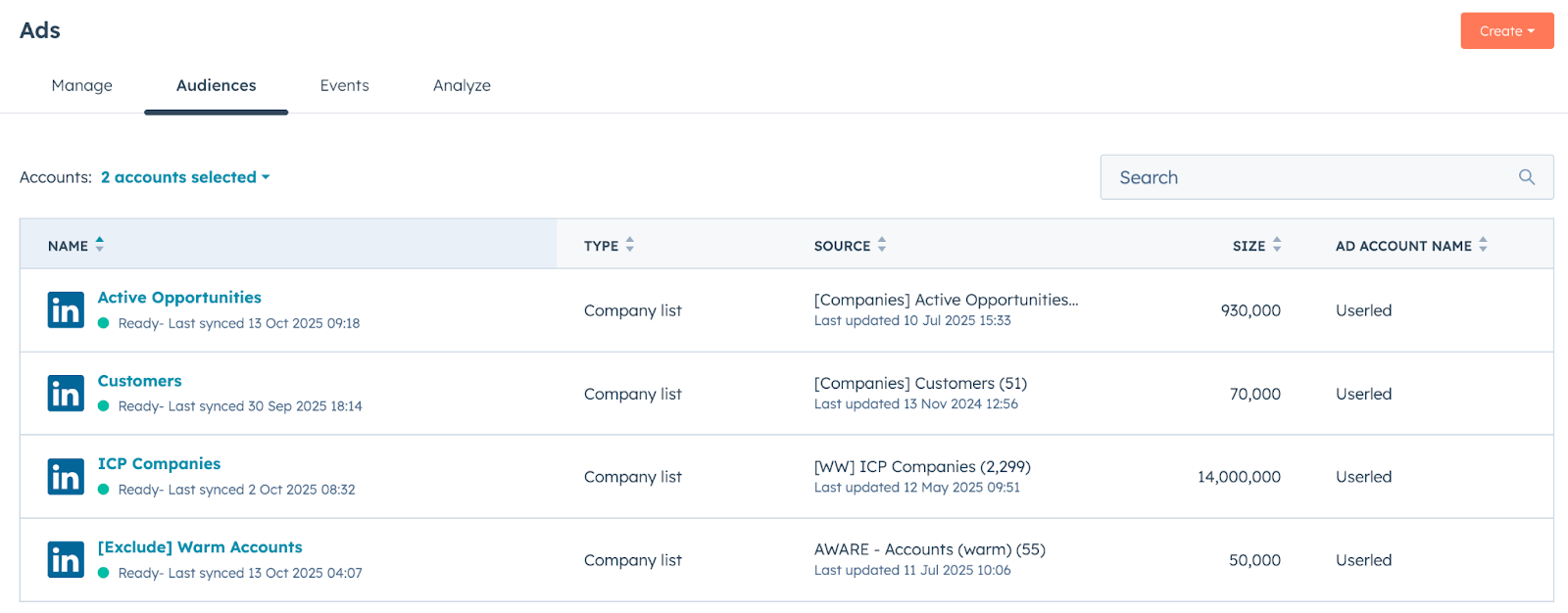
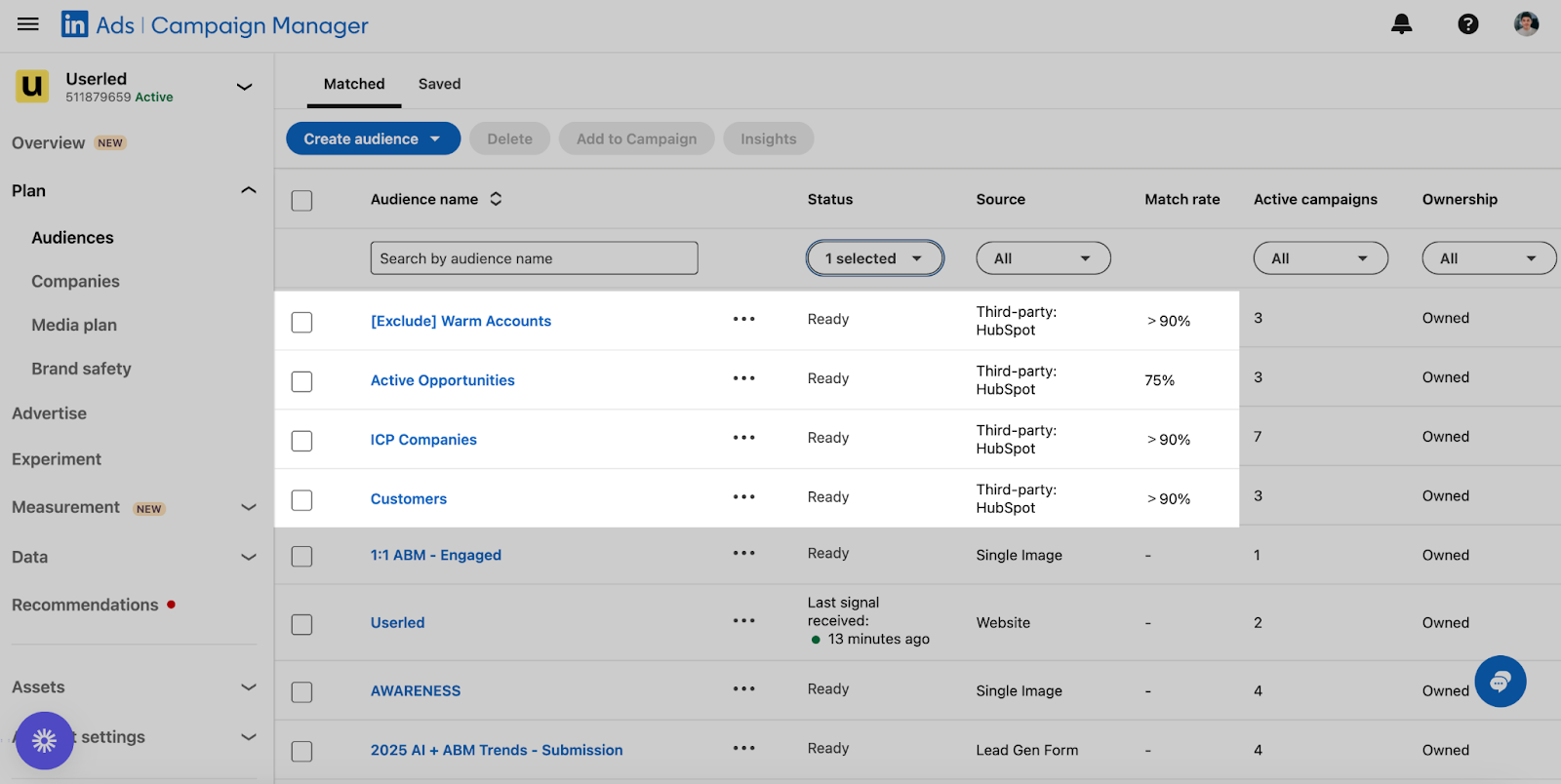
Always upload your account lists to LinkedIn using Matched Audiences or integrate them directly from your CRM. This ensures your campaigns are working from a single source of truth and allows engagement data to feed directly into your pipeline tracking and scoring models.
Platforms like Fibbler can help bring LinkedIn ad engagement signals – impressions, clicks, video view rates – into your CRM. When combined with tools like Userled, you unlock a full loop: personalized engagement → account insights → alerts → sales activation.
Avoiding LinkedIn’s default “landmines”
Launching LinkedIn campaigns isn’t difficult – but launching them correctly can be. The platform has several default settings that can quietly sabotage your ABM efforts if you’re not careful.
Here are a few to watch out for:
- Campaign Group Objectives: By default, LinkedIn forces campaigns in a group to share one objective. Avoid this; group by objective instead.
- Accelerate Mode: This AI-powered delivery mode sounds good but removes control over targeting. Start with Classic Mode for ABM.
- Audience Expansion: Turn this off. It can dilute your targeting by automatically including similar profiles.
- LinkedIn Audience Network (LAN): This places ads on third-party sites. Unless you're running a display strategy, uncheck it.
- Default Bidding: Automated bidding may drive up CPMs unnecessarily. Start with manual bidding to control costs.
- Ad Rotation Settings: LinkedIn defaults to favoring “best performing” ads early. Set to “even rotation” for fair testing.
Bringing it all together: Tools, metrics, and next steps
Your ABM tech stack on LinkedIn
To make all this work seamlessly, you’ll need a few essential tools:
- LinkedIn Campaign Manager for ad execution
- CRM (like Salesforce or HubSpot) to sync targeting and track impact
- Fibbler to enrich your CRM with LinkedIn engagement data
- Userled to automate 1:1 personalization, distribution, and alerts
- Slack or email for real-time seller notifications (Optional)
How to measure what matters
Don’t just look at CTRs or impressions. ABM success depends on account-level insights:
- How many people from target accounts are engaged?
- Did we increase account penetration (e.g. 3+ people from the same company engaged)?
- Are engaged accounts moving further into the funnel or triggering outreach?
For each tier, define success differently:
- 1:Many: Reach, video completion, form fills
- 1:Few: Response rate, time on site, mid-funnel conversions
- 1:1: Meetings booked, opportunity created, pipeline influenced
Final thoughts: ABM on LinkedIn is a journey, not a tactic
LinkedIn ABM isn’t about running one-off ads to job titles. It’s about crafting a cohesive, layered, and intentional journey that reflects what you know about your most important accounts, and meeting them with relevant messaging at each touchpoint.
Start small. Launch a 1:Many pilot campaign. Use the data to define your next 1:Few segments. Then test a 1:1 pilot – even if it’s just for 5–10 accounts.
With the right architecture, tools, and mindset, you’ll not only generate better results – you’ll build a scalable system that continuously improves with every run.
Generated £1.3M pipeline by focusing on UTM parameters personalisation.


Generated £1.3M pipeline by focusing on UTM parameters personalisation.



.png)











